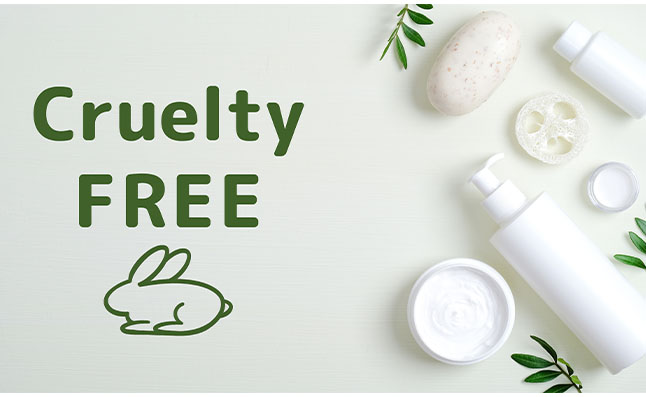In today’s beauty industry, the concept of cruelty-free beauty has gained significant traction, reflecting a growing consumer awareness and demand for products that are not tested on animals. As more people become mindful of the ethical, health, and environmental implications of their purchasing choices, the popularity of cruelty-free beauty continues to rise.
Benefits of Cruelty-Free Beauty
Cruelty-free beauty products offer several compelling benefits:
- Ethical Considerations: Choosing cruelty-free products aligns with ethical values and supports the movement towards compassionate consumerism.
- Health Benefits: Cruelty-free products often contain natural, plant-based ingredients that are gentler on the skin and free from potentially harmful chemicals.
- Environmental Impact: By opting for cruelty-free beauty, consumers contribute to reducing animal exploitation and promoting sustainable practices in the beauty industry.
Certifications and Labels
Understanding cruelty-free certifications and labels is essential for conscientious consumers:
- Cruelty-Free Certifications: Look for certifications from organizations such as Leaping Bunny and PETA, which verify that products and ingredients are not tested on animals.
- Recognized Labels and Logos: Many cruelty-free products feature logos or labels indicating their cruelty-free status, making it easier for consumers to make informed purchasing decisions.
Common Cruelty-Free Ingredients
Cruelty-free beauty products utilize a variety of ethical and sustainable ingredients:
- Plant-Based Ingredients: Natural extracts, oils, and botanicals are commonly used in cruelty-free formulations for their nourishing and beneficial properties.
- Synthetic Alternatives: Cruelty-free brands also utilize synthetic alternatives to animal-derived ingredients, ensuring effective and cruelty-free product formulations.
- Biodegradable Materials: Environmentally conscious brands prioritize biodegradable packaging materials to minimize their ecological footprint.
Cruelty-Free Beuty Brands
The beauty market boasts a diverse array of cruelty-free brands catering to various preferences and needs:
- Leading Cruelty-Free Brands: Established brands like Lush, The Body Shop, and Kat Von D Beauty are renowned for their commitment to cruelty-free practices.
- Emerging Trends: The rise of indie beauty brands and niche market offerings reflects evolving consumer preferences towards cruelty-free, vegan, and sustainable beauty options.
Misconceptions and Challenges
Despite its growing popularity, cruelty-free faces several misconceptions and challenges:
- Greenwashing: Some brands engage in greenwashing tactics, falsely claiming cruelty-free status to appeal to conscious consumers.
- Accessibility and Affordability: Access to cruelty-free products may be limited in certain regions, and some consumers perceive them as more expensive than conventional alternatives.
- Regulatory Issues: Inconsistencies in regulations and labelling standards can complicate the process of identifying genuinely cruelty-free products.
Consumer Education and Awareness
Educating consumers about cruelty-free is crucial for fostering positive change:
- Advocacy Campaigns: Non-profit organizations and advocacy groups play a vital role in raising awareness about animal testing and promoting cruelty-free alternatives.
- Social Media Influence: Influencers and beauty bloggers leverage their platforms to advocate for cruelty-free beauty, driving awareness and encouraging informed consumer choices.
- Resources for Cruelty-Free Shopping: Online resources and apps provide valuable information and guidance for consumers seeking cruelty-free products, from ingredient lists to brand directories.
Transitioning to Cruelty-Free Beauty
Transitioning to cruelty-free is a rewarding journey that can be facilitated by the following tips:
- Finding Cruelty-Free Products: Utilize online resources, brand websites, and cruelty-free directories to identify and purchase cruelty-free beauty products.
- DIY Alternatives: Experiment with homemade beauty recipes using natural ingredients to create custom skincare and cosmetics.
- Supporting Cruelty-Free Initiatives: By supporting cruelty-free brands and initiatives, consumers contribute to a more compassionate and sustainable beauty industry.
Impact of Cruelty-Free Beauty
The shift towards cruelty-free beauty has far-reaching implications:
- Reduction in Animal Testing: Increased consumer demand for cruelty-free products drives innovation and encourages companies to adopt cruelty-free testing methods.
- Market Growth and Innovation: The growing popularity of cruelty-free has spurred market growth and inspired brands to develop innovative, sustainable, and ethically sourced products.
- Global Impact: The momentum of the cruelty-free movement extends beyond individual consumers, influencing industry practices and regulatory policies on a global scale.
Conclusion
Cruelty-free represents a powerful intersection of compassion, ethics, and sustainability in the beauty industry. By choosing cruelty-free products, consumers not only support the well-being of animals but also prioritize their health and contribute to a more environmentally conscious future. Let’s embrace cruelty-free as a symbol of compassion and make conscious choices that align with our values and beliefs.




